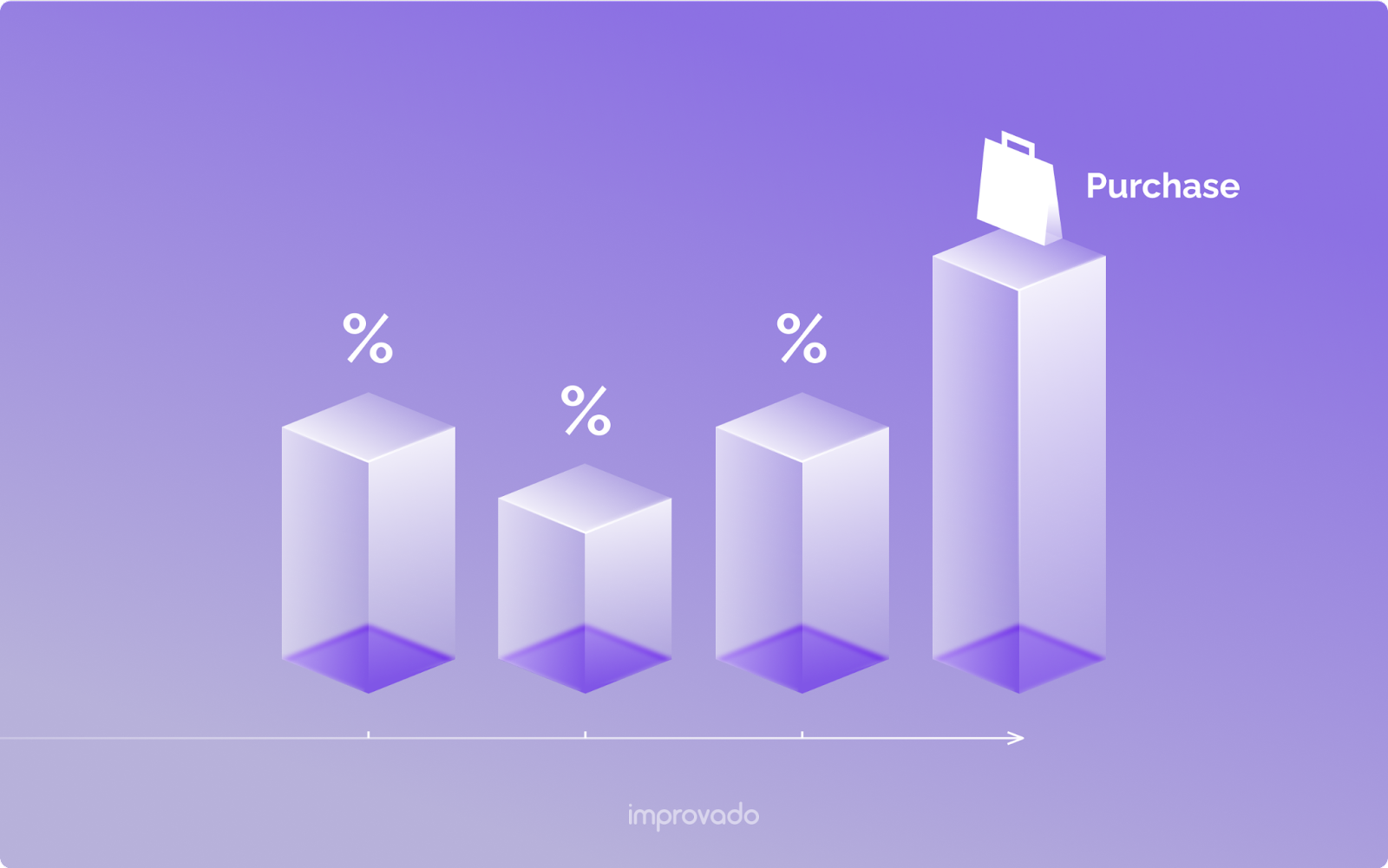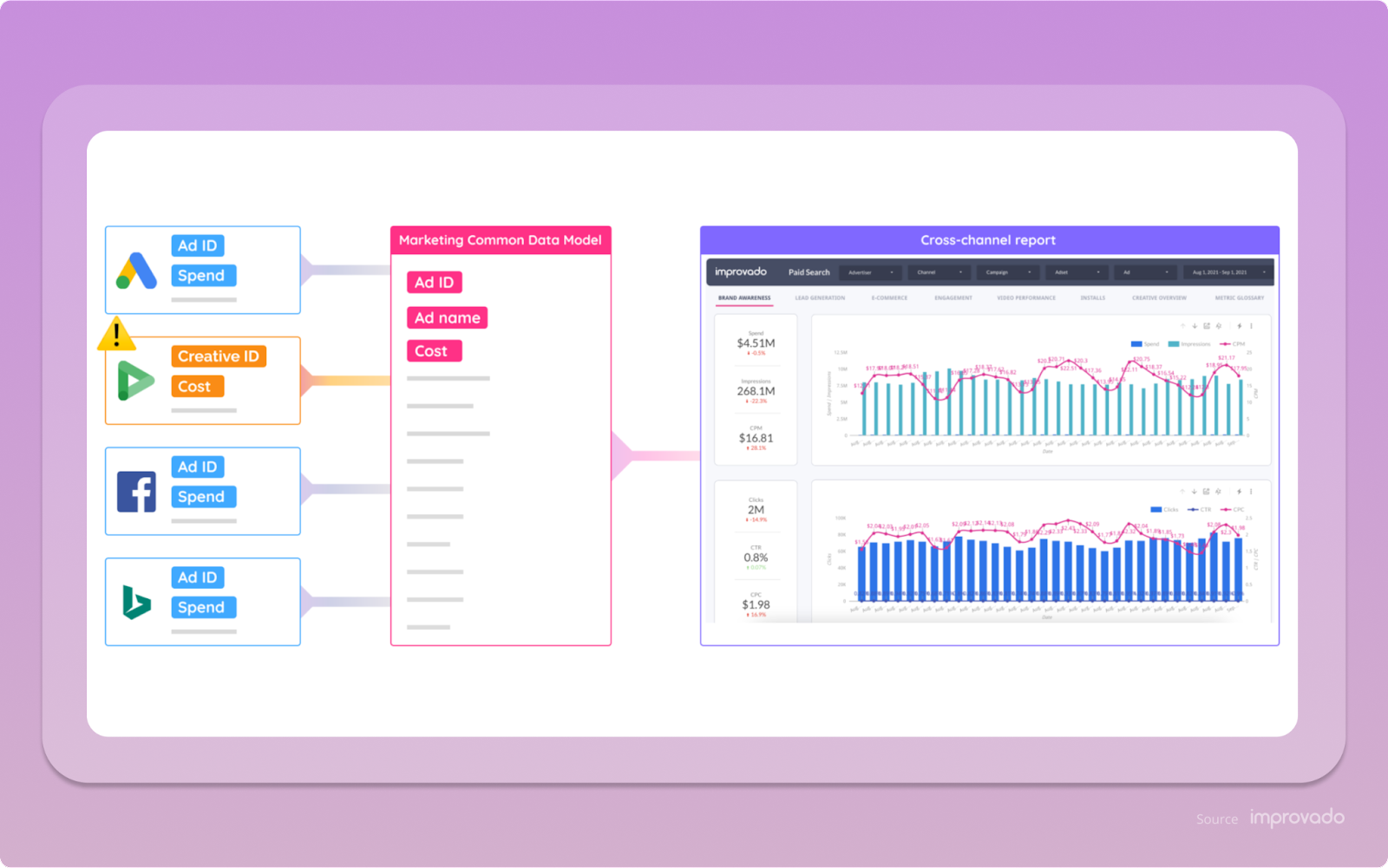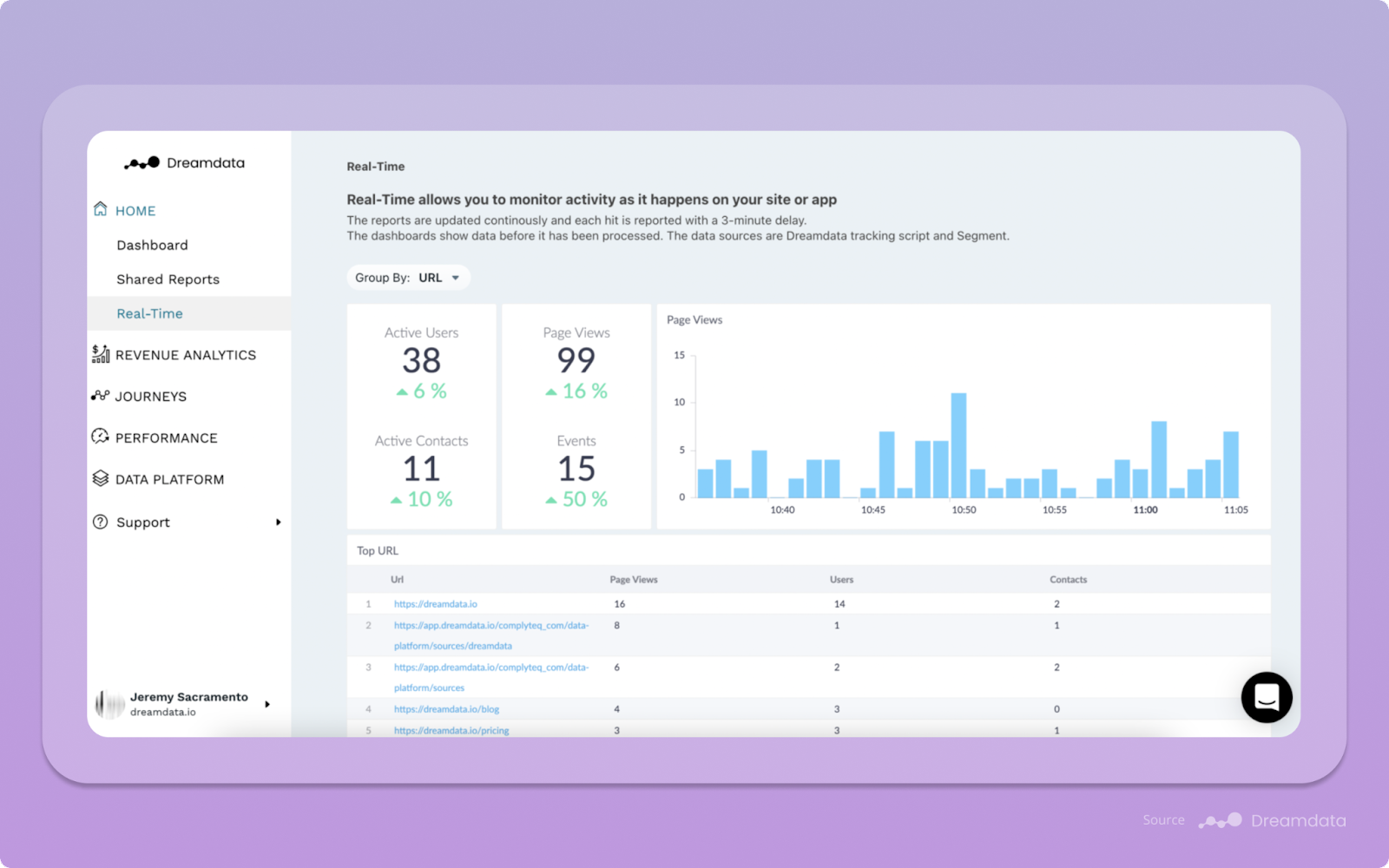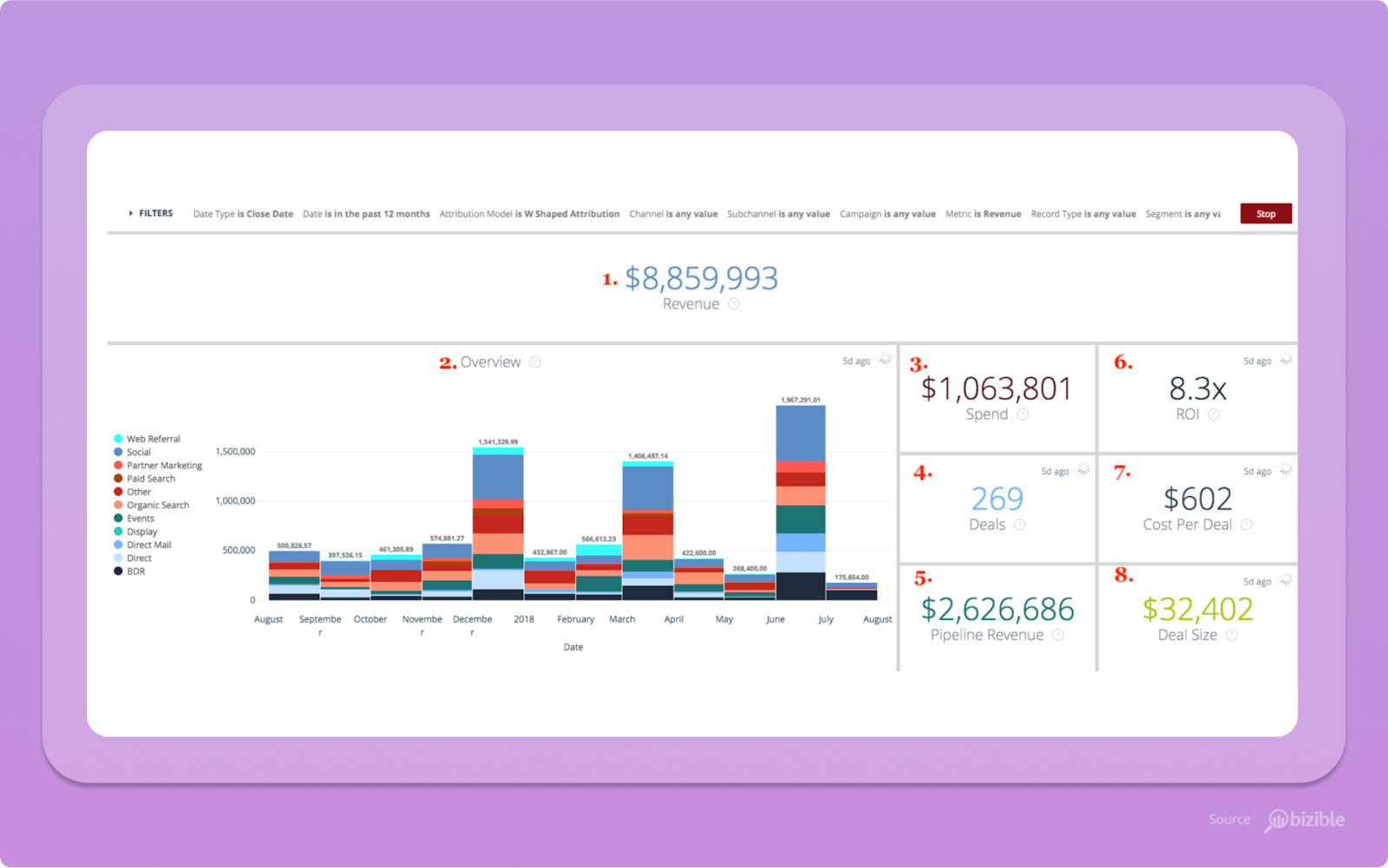Did you know that 61% of marketers will not use ROI when making decisions about their strategy because they have a low level of confidence in their data? And that 74% of companies fail to deliver expected ROI?
If you're running marketing campaigns, it can be hard to figure out what contributes to your bottom line and what doesn’t. You need to know what's producing results to cut out marketing activities that are wasting money. Doing this isn’t easy, but investing in marketing attribution can greatly help.
In this post, we’ll talk about marketing attribution and why it's so important for you and your team. We'll also cover a few of the ways you can use it to identify exactly how your marketing efforts are affecting your ROI.
Key Takeaways
- Marketing attribution helps you track the touchpoints and channels that contribute the most to your bottom line.
- You can do marketing attribution using an in-house approach, though this can be expensive and ineffective due to the complexities of the process itself.
- There are tools that can help you with marketing attribution, but you'll need to look for a few key features to get great results.
- Our top three marketing attribution software to consider are Improvado, Dreamdata, and Marketo Measure.
Unlock your 10x ROAS potential with our Marketing Data Centralization Guide
What is Marketing Attribution?
Marketing attribution helps you identify how each marketing touchpoint a customer runs into throughout the journey impacts their behavior and how likely they are to convert. The goal of marketing attribution is to determine which touchpoint gets the credit for a conversion.
Marketing attribution is measured through one of several marketing attribution models. They show marketers the insights of every touchpoint in the customer journey. Insights marketers can get from attribution: high-impact touchpoints, the most frequently occurring for a specific audience, and which ones trigger the prospect to advance through the awareness ladder.
This allows them to refine their campaigns and other efforts, ultimately improving their marketing ROI.

For example, you might be doing multiple activities that are all part of one larger campaign. These activities are probably getting you great results. However, it's fair to say some are doing better than others. Yet, identifying the ones driving the best results can be hard because they're all running simultaneously.
You could start and stop certain campaigns and perform an awkward split test, but it could cost you if you stop the best-performing campaign. With marketing attribution, you can figure out what's the best campaign while they're active. You can also adjust them on the fly without necessarily harming the results you're getting.
Getting into Attribution Tracking
Attribution tracking determines how the marketing attribution tool you use collects marketing touchpoint data.
Generally, the process consists of several steps:
- Data aggregation: Different tools aggregate data differently—typically using third-party cookies, UTMs, APIs, or JavaScript.
- Data transformation: The collected data needs to be cleaned from broken values that happened due to missing or incorrect data.
- Attribution modeling: With clean data and parameters and metrics that match, the next step is to determine the value of different touchpoints on the overall result (usually, the conversion).
- Visualization: To get the proper insights, the data is visualized with graphs and charts that can be understood.
In practice, each step can vary in complexity depending on numerous factors. You can start doing attribution tracking in one of two ways.
Building an In-House Tool
A reliable attribution solution that your team will actually use needs to do data tracking, modeling, and analysis across all customer touchpoints. Building one in-house is a serious challenge that can take months of work and lots of resources—both in development and analytics. Getting just one data connector right can sometimes take ages.
You’ll also need to spend many hours doing pre-development research and training to ensure everyone gets the gist of marketing attribution models. Plus, when it’s all done, you’ll continually need to invest in maintaining and upgrading the tool.
👉 Read our guide on how to build a custom attribution model
There's also a growing trend toward guarding user privacy and limiting tracking—the iOS 14 update that limited in-app tracking and the adoption of GDPR in 2018 severely affected attribution tracking.
To ensure your in-house tool complies with these and future regulations, you’d need to use identity and access management and adequate analytics solutions. Training your team on the concepts of another technology and using new tools can add months to your development process.

An alternative to building an in-house tool from scratch would be to rely on tool-based analytics or the combination of different attribution solutions. This could be a good solution, but it takes a lot of tweaking and tinkering to get the data silos right.
Also, implementing different tools that cover all your data sources and attribution needs is challenging, even with automation. Getting multiple tools to communicate and work together accurately is even more difficult.
Sticking with just one or a few tools also doesn’t work, as you’ll have a biased view of the customer journey.
To ensure you can adequately do marketing attribution tracking, you'll need a more efficient approach, which is hard to do in-house.
Investing in Marketing Attribution Tools
Many companies invest in marketing attribution software instead of doing things on their own—you can get amazing insights at a fraction of the cost and effort of doing things in-house. These tools provide ready-made solutions that make analyzing marketing campaign performance and proper attribution easy.
They work in the same way as general attribution tracking: marketing attribution tools pull your data from the platforms you’re interested in getting insights from, run it through your chosen attribution models, and deliver the insights you're looking for—all quickly and effortlessly.
Top 3 Marketing Attribution Software to Choose From
Since there are so many different marketing attribution tools out there, you’ll need to establish primary criteria to narrow down your choices. We suggest the following:
- Data source connectors: The more sources your attribution software can connect to, the better. Generally, it should be able to integrate with your sales and marketing platforms.
- Scalability: As your business grows, so should your marketing attribution software. Ensure that the one you choose can accommodate any future data sources and integrations you might need in the future.
- Adaptability: Some tools cover a broad range of models, devices, and data sources, while others focus on just one or a few more.
Based on these criteria, here are the top three marketing attribution software you should consider.
Improvado
Improvado enables marketing, sales, and revenue teams to quickly and easily understand the return on every invested dollar. The marketing attribution solution provides enterprise-grade companies to build and automate attribution modeling.

At the moment, it works with over 500 data sources, including Google Ads, Facebook Ads, TikTok Ads, Google Analytics 4, Instagram Stories and Mentions, Shopify, and more, making it seamless to do cross-channel marketing attribution modeling.
Improvado works with first-party cookies and in the cookieless environment, making it a great solution now that there are more and more privacy regulations and many companies are struggling to find new ways to track customers and their actions.
The platform can also attribute the events of multiple stakeholders to one account, giving users complete visibility of the B2B customer journey while tracking related costs.
Improvado is a no-code solution that provides enterprises with custom data pipelines and visualizations through managed analytics services. The Improvado solution is highly customizable—meaning companies can tailor it to its needs. Speaking of customization, Improvado’s pricing is also tailored to the needs of every customer, making the platform far more flexible than its competitors.
Dreamdata
Dreamdata is another popular marketing attribution solution. It can help companies analyze which pipelines, channels, and campaigns drive revenue.
They offer the ability to do custom account-based attribution modeling—covering everything from the first anonymous visit to what the paying customers engage with.

This tool is designed for smaller teams and isn't really targeted toward enterprise companies.
Dreamdata offers one free and two paid plans. The paid plans start at $999 a month and include a free trial—helpful if you want a hands-on experience of how the software interacts and integrates with your tech stack and data.
Some people report that using Dreamdata can be a little bit overwhelming because it provides too much data to handle—making it difficult to derive insights that'll produce results for their business quickly.
Adobe Marketo Measure (Bizible)
The final product we'll look at is Adobe Marketo Measure, which changed its name from Bizble in March 2022.
Adobe Marketo Measure helps B2B companies measure the value and ROI of every interaction across the customer journey. It uses a touchpoint-based data model that allows customers to monitor lead- and account-based marketing outcomes and identifies how anonymous interactions eventually turn into closed deals.

Because this attribution tool helps track touchpoints across channels and campaigns, it makes it easy to identify the campaigns that lead to a favorable outcome and optimize the others.
Adobe Marketo Measure also integrates with a lot of CRM solutions.
Some people report that it’s challenging to navigate. However, people generally say positive things about their support team, so users should be able to get the help they need quickly.
Some people also find the tool a bit too slow, which potentially hurts the user experience. There are also reports that users have to upload cost data manually, which could increase the time it takes to get insights.
Conclusion
Marketing attribution can be powerful if done right. Taking the in-house approach and doing everything manually and from scratch could be a worthwhile investment, but it will probably be a long road ahead. Because of this, many companies use marketing attribution tools already available on the market.
There are plenty of marketing attribution solutions for everyone to choose from. Many of these tools are designed with most companies in mind, while others only work for some. Suppose you want to get the most out of marketing attribution. In that case, you’ll need a solution that fits most of your criteria:
- Improvado is a great choice for enterprise-level and all other companies that want to take full advantage of marketing attribution and get the most out of their marketing attribution.
- Dreamdata is an excellent choice for smaller businesses that don’t have lots of different data sources.
- Adobe Marketo Measure (Bizible) is the logical choice for those already deep in the Adobe ecosystem.
.png)



.png)
